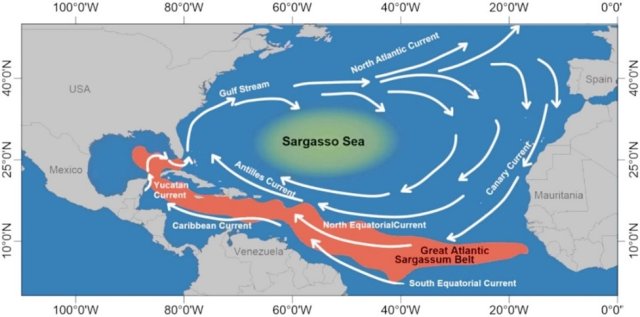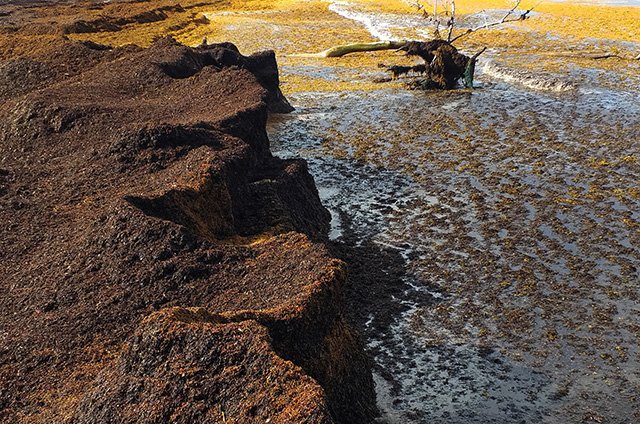Sargassum Inundation Events (SIEs)

Related information in Spanish
Sargassum is a type of floating algae that forms large aggregations or floating mats in the ocean and is historically found in the Sargasso Sea, a region in the North Atlantic Ocean. Despite being a familiar sight on beaches on the Atlantic coast, Sargassum has gained significant attention from scientific and coastal communities since 2011 because of new, large aggregations of the algae outside of the Sargasso Sea. The area this new aggregation of Sargassum occupies has been named the Great Atlantic Sargassum Belt (GASB) and stretches from the west coast of Africa to the Caribbean and Gulf of America.
When in abundance at sea, Sargassum is a foundational ecosystem species that provides habitat for diverse assemblages of fish, invertebrates, sea turtles, and sea birds. However, when large amounts of Sargassum from the GASB aggregate nearshore or are washed onto shore (also known as Sargassum inundation events- SIEs) these can harm human health, the environment, and coastal economies.
When a large amount of beached Sargassum decomposes it can release gases (e.g., hydrogen sulfide and ammonia) that are unpleasant to smell and pose a potential risk to people when inhaled. Sargassum can also contain marine debris, metals, and other pollutants, presenting challenges for disposal and potential impacts to nearshore water quality. Unsightly excess Sargassum in nearshore coastal areas and on beaches can also have significant negative impacts on local economies, particularly on fishing and tourism industries. Additionally, large SIEs can harm aquatic plants and animals (i.e., wildlife) in a variety of ways, causing declines in their populations and associated coastal ecosystems.

More information about Sargassum is also available from the National Oceanic and Atmospheric Administration’s National Ocean Service:
Reference
- López Miranda, J. L., Celis, L. B., Estévez, M., Chávez, V., van Tussenbroek, B. I., Uribe-Martínez, A., Cuevas, E., Rosillo Pantoja, I., Masia, L., Cauich-Kantun, C., & Silva, R. (2021). Commercial Potential of Pelagic Sargassum spp. in Mexico. Front. Mar. Sci., 8, 768470.
